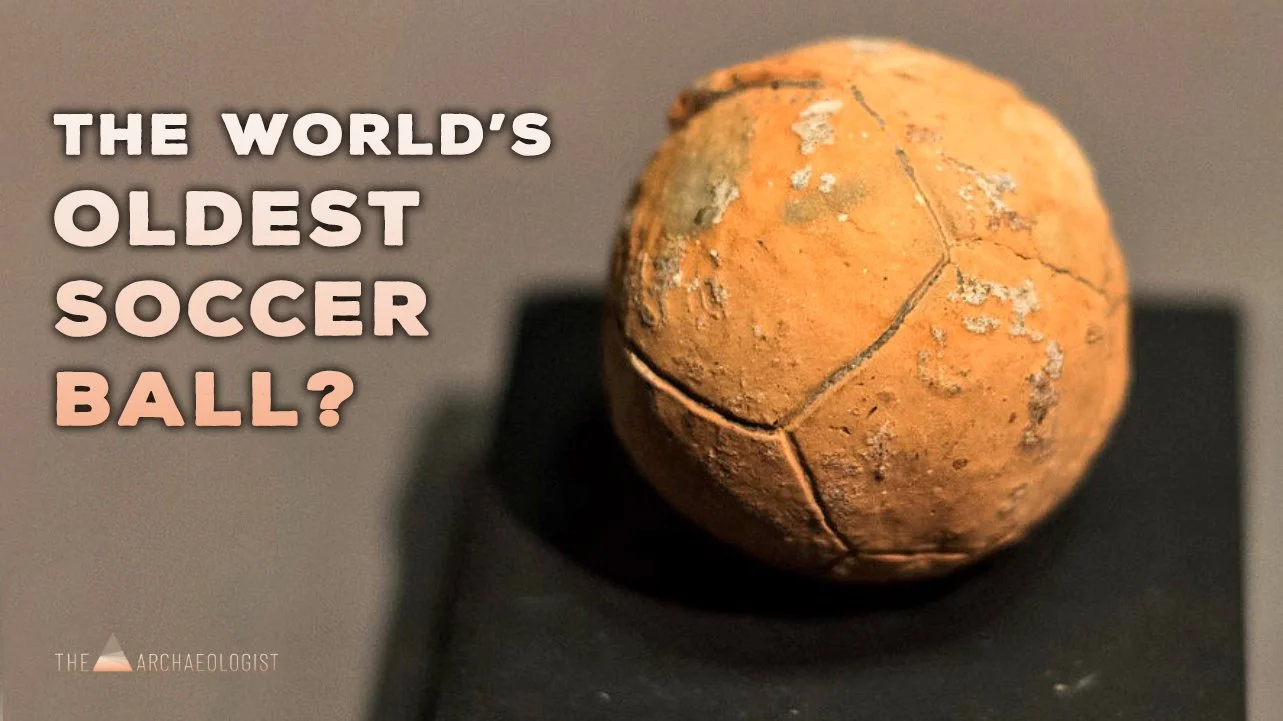In a remarkable discovery on the island of Samothrace, a terracotta miniature has surfaced that may represent the oldest known soccer ball in history. Unearthed from Tomb S130 in the South Necropolis, part of the Sanctuary of the Great Gods, this artifact is dated to the Hellenistic period, around 275–250 BCE. This solid clay sphere, which strikingly resembles a modern leather soccer ball, provides an intriguing glimpse into the recreational activities of ancient Greece and raises the possibility that the roots of soccer-like games may extend far deeper into history than previously thought.
The artifact was discovered by an American archaeological team led by Elizabeth Dusenbury, alongside Greek archaeologist Andreas Vavritsas, who was active until his passing in 2014. The tomb, situated on a site renowned for its religious significance, yielded many fascinating objects, but none as captivating as this small, spherical object. Despite its simplicity, the terracotta ball’s design is unmistakably reminiscent of the leather balls used in modern soccer, prompting speculation about its purpose and significance in the ancient world.
Ancient Greek literature mentions the existence of leather balls, often made by inflating the bladder of a large animal, usually a pig. These balls were commonly constructed from sewn-together pieces of leather or fabric, stuffed with materials like horsehair, straw, or wool. Such balls were central to a variety of games that entertained both children and adults, suggesting that playing with a ball was a common pastime in the Hellenistic era.
The discovery of this terracotta ball in a tomb is particularly significant. It suggests that ball games were not only a form of entertainment but also held cultural or symbolic importance, perhaps even serving as a part of funerary customs or religious rites. The burial of this object alongside the deceased could imply a belief in the continuation of such activities in the afterlife, or it could symbolize a cherished memory or pastime of the individual interred.
Ball games were indeed popular in ancient Greece. Two such games, aporrhaxis and anakrousis, involved striking a ball against the ground or a wall with considerable force. The goal was to keep the ball in motion as long as possible, a concept that bears some resemblance to modern soccer, where the objective is to keep the ball in play and under control.
The terracotta ball from Samothrace thus stands as a fascinating link between the ancient and modern worlds. While it is unlikely that the ancient Greeks played a game identical to modern soccer, this artifact suggests that the basic human enjoyment of ball games has remained consistent through the millennia. The fact that this simple clay sphere bears such a strong resemblance to today’s soccer balls is a powerful reminder of the continuity of human culture and the enduring nature of play across different eras and civilizations.
As scholars continue to study this artifact, it may offer further insights into the recreational life of the ancient Greeks and perhaps even prompt a reevaluation of the origins of ball games. Could this small terracotta object from Samothrace indeed represent the world’s oldest soccer ball? While the answer remains uncertain, the discovery undoubtedly enriches our understanding of ancient Greek culture and its influence on the recreational practices that continue to shape our world today.









